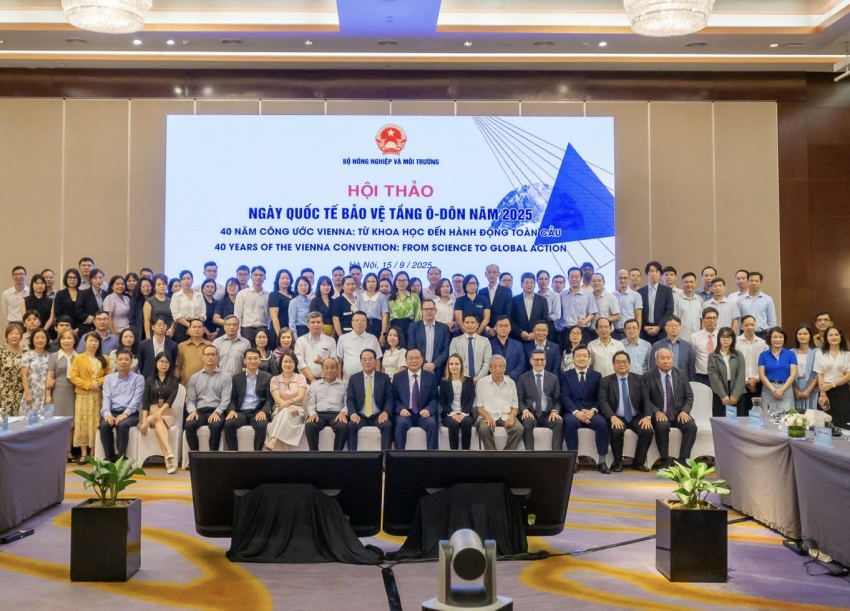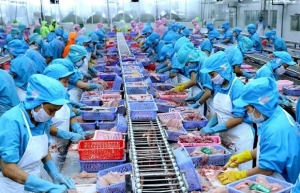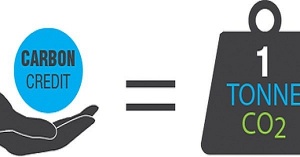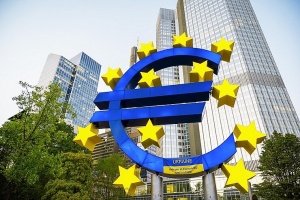 |
At a national workshop in Hanoi on September 15, the Ozone Secretariat, a UN body supporting the Montreal Protocol on ozone-depleting substances, reported that Vietnam has prevented around 240 million tonnes of CO₂ equivalent since the early 1990s by eliminating and controlling substances used in the production of air conditioners and refrigerators. The event focused on advancing ozone protection while strengthening cooperation between government agencies and the private sector to support a greener transition.
Attendees heard how Vietnam has made steady progress over the past three decades since joining the Vienna Convention in 1994, which was established to protect the ozone layer from depletion and shield humanity and the planet from harmful ultraviolet radiation. During this period, the country has consistently implemented comprehensive measures to control and phase out ozone-depleting substances (ODS), while also beginning to gradually manage hydrofluorocarbons (HFCs) in line with its international commitments.
Vietnam’s actions have included eliminating a range of ODS such as chlorofluorocarbons (CFCs), Halons, carbon tetrachloride (CTC), hydrochlorofluorocarbons (HCFCs), and methyl bromide. The country completely phased out the consumption of CFCs, Halons, and CTCs as of 2010. It also eliminated pure HCFC-141b used in foam production as of January 2015, and has restricted the use of methyl bromide solely for quarantine and pre-shipment purposes.
These efforts have contributed to protecting the ozone layer and also played a vital role in reducing greenhouse gas (GHG) emissions, reinforcing Vietnam’s commitment to both environmental protection and climate change mitigation.
Ozone layer protection has been anchored in the Law on Environmental Protection (2020) and further detailed through a series of legal instruments. These include Decree No.06/2022/ND-CP on GHG emissions reduction and ozone protection; Decree No.45/2022/ND-CP on administrative sanctions in the environmental sector; as well as Circular No.01/2022/TT-BTNMT and Circular No.20/2023/TT-BTNMT, which established national technical standards for the management, collection, recycling, and treatment of controlled substances.
Most recently, the government issued Decree No.119/2025/ND-CP to strengthen the legal framework and create better conditions for businesses and stakeholders to implement their obligations. In parallel, Vietnam has also introduced and applied national technical standards and regulations on safety in the production and use of controlled substances, ensuring greater compliance with international commitments.
“The country’s efforts to protect the stratospheric ozone support the recovery of the ozone layer while aligning with national goals, as the control and elimination of these substances are integrated into the emissions reduction roadmap and Vietnam’s Nationally Determined Contribution,” said Le Ngoc Tuan, deputy director of the Department of Climate Change under the Ministry of Agriculture and Environment.
“Technology conversion and refrigerant recycling have opened opportunities in the carbon credit market, access to international finance, and resources for enterprises to innovate. These protection activities also advance sustainable cooling, improve energy efficiency, and lay the groundwork for green transformation, boosting Vietnam’s competitiveness and global integration,” added Tuan.
 |
| Le Ngoc Tuan, deputy director of the Department of Climate Change under the Ministry of Agriculture and Environment |
Scientific evidence indicates that the stratosphere is gradually recovering and is expected to return to normal levels by the middle of this century. At the same time, the Montreal Protocol has played a critical role in slowing global warming, as many ozone-depleting substances are also powerful GHGs. Studies show that without the Montreal Protocol, average global temperatures could be about 0.5°C higher by the end of this century.
To date, 99 per cent of ozone-depleting substances have been phased out globally. The ongoing recovery of the ozone layer is clear evidence that when nations unite and take decisive action, they show the ability to overcome even the most daunting environmental challenges.
Looking ahead, under the National Plan for the management and elimination of ODS and controlling GHG for the period 2024-2045, Vietnam expects to reduce consumption equivalent directly to more than 11 million tonnes of CO₂ equivalent from HFCs. This affirms the nation’s strong commitment to working with the international community to achieve net-zero emissions by 2050.
“The requirements for managing refrigerants are increasingly high to protect the ozone layer and reduce GHG emissions,” said Tina Chondraki Birmpili, head of the Executive Board of the Multilateral Fund for the Implementation of the Montreal Protocol. “The Multilateral Fund has had a close cooperation relationship with Vietnam over the past many years, with 90 approved projects, totalling about $30 million. The support aims to develop a legal and technical framework to meet the requirements of the Montreal Protocol, helping Vietnam build a strategy and plan to manage and eliminate ozone-depleting substances and reduce GHG emissions.”
“The fund also launched a new support for the Action Plan for the Implementation of the Kigali Amendment to the Montreal Protocol. Vietnam is one of the countries that early proposed this plan with solutions focusing on efficient and economical use of energy. The two sides will continue to work together to approve the proposals as soon as possible,” she added.
 |
Business Times highlights new opportunities in EU-Vietnam Trade
The Business Times on August 11 posted a story describing the EU-Vietnam Free Trade Agreement (EVFTA) as a significant economic milestone for Vietnam. |
 |
Vietnam to pilot operating carbon trade exchange from 2025
Vietnam plans to set up and pilot the operation of a carbon trade exchange from 2025, according to a new Government decree on greenhouse gas (GHG) emissions and Ozone layer protection. |
 |
Eurozone stocks, euro tumble as Russia fuels energy crisis
Eurozone stocks tumbled Monday and the euro hit a new 20-year dollar low on energy crisis fears, after Russia said it would not restart gas flows to Germany and effectively most of the continent. |
 |
Eurozone inflation eases slightly in June
The eurozone’s annual rate of inflation cooled in June in line with analysts’ expectations thanks to a slowdown in food and energy price rises, official data shown on Tuesday. |





